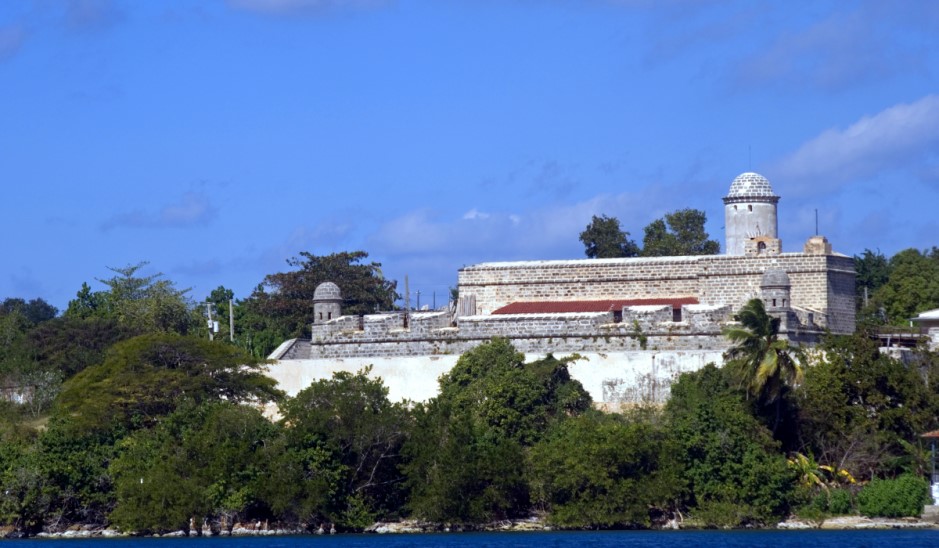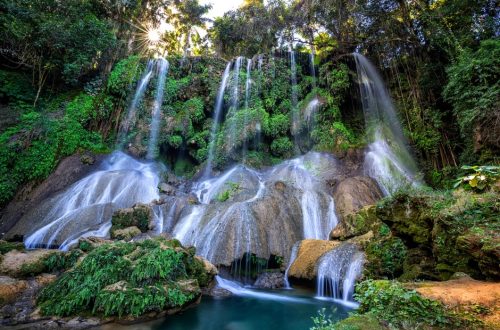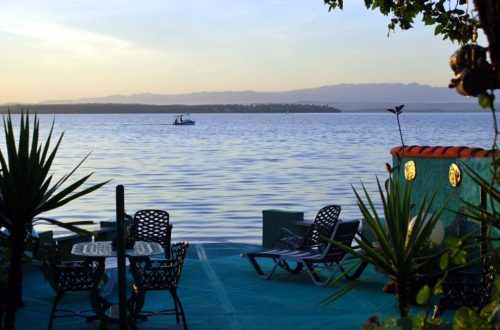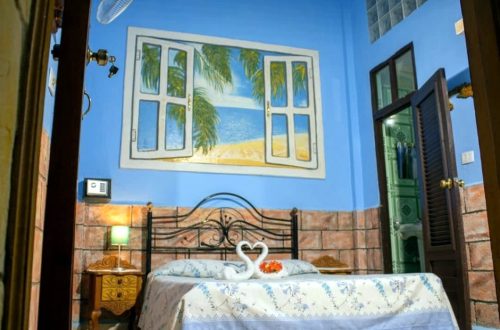The Jagua Fortress
History Wrought in Stone and Sea
I. The Fortress
On the coast of Cienfuegos, Cuba, where the water meets the land, there lies a fortress of stone and mortar. It is the Jagua Fortress, a monument to the war against piracy and the struggle for sovereignty in a land of conflict and desire. The fortress stands as a testament to history, to the men who built it, to the dreams of empires and the turmoil of nations.
The fortress was built on the edge of the Caribbean Sea, where the waters of the Jagua Bay lap against the rocky shore. The fort sits atop a hill, its back to the mountains and its face to the sea. From its ramparts, one can see the vast expanse of the ocean and the ships that sail upon it. In the distance, the city of Cienfuegos beckons, its white buildings gleaming in the sun.
The fortress itself is made of stone, its walls weathered by the wind and the sea. It is a simple structure, yet strong and resilient, like the men who built it. The walls are thick and sturdy, designed to withstand the assault of cannons and the battering of storms. The fortress has three bastions, each facing a different direction, and a central courtyard where the soldiers would gather to train and to rest.
Inside the fortress, there are barracks and storehouses, a chapel and a well. The well is deep and cool, filled with water that comes from the earth itself. The water is pure and fresh, a gift from the land to those who dwell upon it. The chapel is small and unadorned, its walls adorned with the symbols of faith and the names of the saints. The barracks are plain and utilitarian, their walls lined with bunks and lockers, their floors strewn with straw and the remnants of past lives.
II. The History
The story of the Jagua Fortress begins in the year 1742, when the King of Spain, Felipe V, ordered the construction of a fortress to protect the city of Cienfuegos and its bay. The bay was a strategic location, an important port and a gateway to the Caribbean. It was also a haven for pirates, who sought to plunder the wealth of the Spanish Empire and disrupt its trade routes.
The task of building the fortress fell to the engineer José Tatay y Valdés, a man of skill and vision. He chose the site for the fort carefully, selecting a spot on the coast that was both defensible and accessible. The construction of the fortress began in 1745, and it was completed in 1748.
The fortress was named San Severino de Jagua, in honor of the saint to whom it was dedicated. The name Jagua comes from the indigenous people who once inhabited the area, the Jagua people, who called the bay “Xagua.” The fortress was designed to defend the bay and to deter piracy, and it was successful in its mission.
For more than a century, the Jagua Fortress stood as a bastion of Spanish power in the Caribbean. It was a symbol of the strength and the might of the empire, a reminder to all who would challenge its authority. Over the years, the fortress was expanded and improved, its walls strengthened and its defenses bolstered.
Yet, like all things, the fortress was not immune to the passage of time. The Spanish Empire began to crumble, its power waning and its dominions slipping away. The fortress, once a symbol of strength, became a symbol of decline, its walls weathered and its defenses weakened.
In 1898, the Spanish-American War broke out, a conflict that would change the course of history and reshape the map of the world. The United States, a young and ambitious nation, sought to challenge the old order and to assert its influence in the Caribbean. The Jagua Fortress, a relic of a bygone era, found itself caught in the crossfire of this struggle for power.
As the war raged, the fortress was bombarded by the guns of the American navy, its walls shaking under the force of the onslaught. Yet, the fortress held firm, its defenders resolute in their determination to protect their homeland. It was a desperate and valiant stand, a fight against the tide of history.
In the end, however, the fortress was forced to surrender, its flag lowered in defeat. The Spanish Empire was no more, and the island of Cuba found itself under American occupation. The fortress, once a symbol of Spanish power, now stood as a reminder of the shifting sands of time and the relentless march of progress.

III. The Legacy
In the years that followed the war, the Jagua Fortress was largely forgotten, its walls left to crumble and decay. Yet, the fortress was not destined to fade into obscurity, its story to be lost to the ages.
In the 20th century, the fortress was rediscovered by the people of Cuba, who recognized the historical and cultural significance of this ancient monument. Efforts were made to restore and preserve the fortress, and in 1978, it was declared a National Monument.
Today, the Jagua Fortress stands as a testament to the past, a window into the history of a land and its people. It is a place where the echoes of the past can still be heard, where the ghosts of long-dead soldiers still walk the ramparts and the whispers of forgotten stories linger in the air.
Visitors come from near and far to explore the fortress and to learn its history, to walk its walls and to gaze upon its weathered stones. The fortress is a symbol of the resilience and the perseverance of the human spirit, a reminder of the struggles that have shaped the world and the forces that have molded its destiny.
The Jagua Fortress, once a bastion of empire and a citadel of power, now stands as a monument to the passage of time and the enduring nature of the human spirit. In its stones and its mortar, its ramparts and its walls, the fortress tells the story of the men who built it, the battles that were fought in its shadow, and the dreams and the ambitions that have shaped the course of history.
In the words of Ernest Hemingway, “There is nothing noble in being superior to your fellow man; true nobility is being superior to your former self.” The Jagua Fortress, a monument to the past and a symbol of the present, is a testament to the power of change and the resilience of the human spirit. It is a reminder that, like the fortress itself, we are all shaped by the forces of history and the struggles of our ancestors, and that we too can rise above our own limitations and achieve greatness in the face of adversity.
In the end, the story of the Jagua Fortress is not just the story of a fortress or a monument. It is the story of a people, a land, and a history that has been shaped by the forces of time and the tides of change. It is a story that continues to be written, as the fortress stands sentinel over the Caribbean Sea, a witness to the unfolding saga of the human race.



